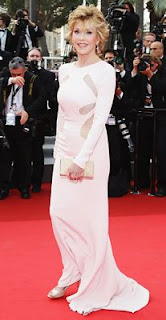This year, for example, models of large and thick-rimmed glasses were a favorite, either goggles or sunglasses to help clarify the vision that serves to shield from the sun. This trend coincided with the ongoing fashion week event in New York, London, Paris and Milan.
"Trends in sunglasses are also divided according to seasons, spring / summer and autumn / winter. It's just the trend change may not be too visible, such as handbags or shoes, "said Endro Setiawan of the event and promotion Optics Melawai.
Large frames are popular in the year 1950-1970's it became a trend, especially in the brands that closely with the fashion industry, such as Prada, Bottega Veneta, Marc Jacobs, Alexander McQueen, as well as two brands that became a favorite of consumers in Jakarta, the Gucci and Dior. Of course with detail that characterizes each.
Bottega Veneta, for example. Although not include brand names or logos, Bottega Veneta has a characteristic, namely woven motifs on a frame-shaped stems and butterflies. Woven motifs characteristic of Bottega Veneta products.
Eyeglasses Marc Jacobs also appeared with a large frame, with a curve resembling butterfly wings. In addition, there are Balenciaga octagonal frame. While McQueen's designs have adorned with skulls on the connection between frames and sunglasses stalks.
Dior, even have glasses with the equivalent category of haute couture for fashion, ie with a crystal ornament on the handle which is colored purple.
For the special brand of eyewear, such as Alain Mikli, Coppe & Sid, Oliver People, and Silhoutte, some choose to follow trends that are prevailing. However, there is also survived by his trademark, like Silhoutte. This brand models survive with rimless glasses and lenses are smaller and lighter because the trunk is made of titanium. Even if there are variations, only the colored part of the trunk.
Such as clothing, eyeglasses frames purple, red, blue and other colors are bright impression has always been a trend for spring / summer. As for winter, the color chosen tend to be dark, though not always black.
History
The advent of goggles with function and design as it now turned out to have a long way. Spectacles & Sunglasses Books published by The Pepin Press review that the science of optics was known to the
Egyptians, Greeks, and Romans since the mid-first century.
Roman philosopher called Seneca found that an object growing larger and clearly visible when viewed through a bowl of water. Greek astronomer and physicist, Ptolemy, and Abu Ali al-Hasan ibn al-Haitham, known as Alhazen, from Iraq to make a book on optics.
The theory of Alhazen, the objects appear larger through this glass ball, to inspire the scientists from the UK and Germany so comes to reading a flat stone made of crystal. How to use it, this stone is placed above the text to get a larger font.
After that, people look to rock crystal form as a reading device could be more practical to use. Technological developments from decade to decade eventually led to the form of glasses, ranging from a framed lens, but without the stalk, until stemmed glasses.
Eyewear industry developed rapidly in the 1930s in America, Italy, France, Germany, and Austria. In 1932, Carl Zeiss Company makes a comfortable glasses to wear and aesthetically.
In the era of the 1930s as well, precisely in 1937, was born of the popular brand to date, the Ray-Ban, under the company Bausch & Lomb. Ray-Ban Aviator 3025-launched models are often used model of Michael Jackson, and until recently a model of a classic brand.
More and more manufacturers, a frame also increasingly diverse. In the era of the 1950s, emerging forms of butterflies and cat eyes, with a straight frame at the top and curved bottom, for women.
For men, a model named Nylor is the most popular. The model that made the French company named Nylor is only framed at the top so the lens looks like hanging. Entering the 1970's, then a large frame and thick to be a trend, as it was popular again today.








































